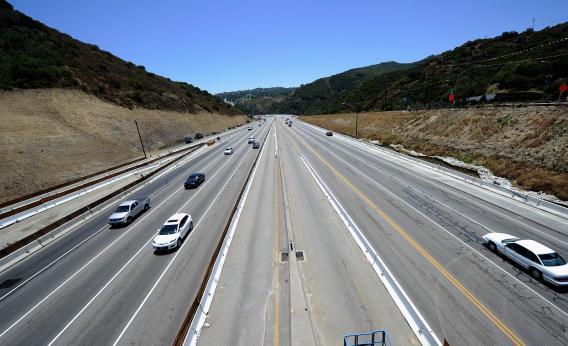We’ve all seen the signs on the highway: “Speed limit enforced by aircraft.” Every time I pass one I think how unlikely it is the state or local government has enough money, time, or interest to scramble a jet on my behalf. (Actually, my precise thought-words are usually, “Yeah, right.”) In my mind, the signs have always been in the same category of deterrent as the lie parents tell their kids about a special chemical that makes pool water change colors when you pee. You know it’s probably bogus, but who wants to be the kid emitting a purple urine cloud?
I bring all of this up now because every day there’s a new story about how our drones are coming home to roost. People are afraid of shadowy government motives and what snooping drones could mean for the future of privacy, but you never hear anyone complaining about the uniformed police officers that are allegedly already watching from above. The Ohio State Highway Patrol, for instance, says on its website that it’s equipped with Forward-Looking Infra-Red and cleared to perform “photo missions,” including searching our private property for marijuana.
So are they really up there? Early last year, the Washington Examiner reported that Virginia had all but done away with aerial operations due to budget constraints. It costs $150 an hour to keep the birds in the sky, and that doesn’t consider overtime pay for pilots and the officers they coordinate with on the ground. (Most air surveillance works in tandem with at least one ground unit, and if you fight the ticket, both officers appear in court.) All in all, Virginia’s aircraft deployed just once in 2011, and a representative of the aerial division confirmed that they’re flying with the same frequency in 2013—special projects only.
Of course, you may not want to sign the kids up for Tokyo-drifting class just yet. The commander of the Ohio State Highway Patrol Public Affairs Unit assured me they have 15 uniformed officer-pilots, two American Eurocopter turbine-powered helicopters, and 14 Cessna airplanes. Enforcement by air remains “an integral piece” of the state’s ongoing goal of reducing traffic fatalities.
Iowa also still employs aircraft—eight helicopters . (Fun fact: In addition to catching speeders and aggressive drivers, they also monitor illegal hunting.) Lt. Robert Hansen says they can even use their units in response to certain situations, like hearing the revs of crotch rockets getting ready for a street race. “Being in the air gives you an advantage in higher traffic areas where radar isn’t particularly effective,” Hansen explained. “It also lets you observe vehicles for a longer distance—at which point you can see quite well which car is traveling significantly faster than the others.”
When asked about the signs, Hansen admits the Iowa DPS Air Wing isn’t flying every day. However, they do have operations up on a weekly basis. He also notes that most of their surrounding states employ similar methods. “We put the signs up because we want you to know and obey the speed limit,” he told me. “We want to keep people safe.”
If Virginia’s economic troubles indicate what’s ahead for other air wings, we may see new pressure to adopt smaller, more cost-efficient drone programs in their stead. (Though according to a poll taken last year, 67 percent of Americans really don’t want domestic drones monitoring their speed.)
As for the signs: It seems the threat of aerial justice depends not only on the state you’re in, but also its budget, manpower, and timing. Will you slow down the next time you pass one? Or will you be the kid to pee in the pool?
At the very least, I bet you look up.
